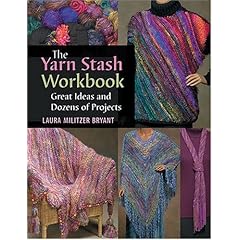I had a lot of fun coming up with the concept, and then designing the
14 Cable Hat. I thought it would be worth dedicating an entire post to the design process.
I started with a pad of graph paper (thank you, Keith!) and a bunch of knitting stitch books. I went into my own library, and pulled out
99 Knit Stitches and my
Knitting Perpetual Calendar. I borrowed
Cables Untangled from the Cambridge Public Library. I photocopied all of the cables that I found interesting, trying to find a mix of "thick" and "thin" cables. I probably photocopied more than 3 dozen cables total.
To know how many cables I could fit in the hat, I first needed to decide how many stitches there would be. I measured my head (circumference ~22 inches) and calculated the gauge (9.5 sts/ 2 inches). I decided that the hat would stretch out a bit, and I wanted something tight fitting, so I settled at 100 stitches for the hat.
.jpg) My worktable sure got messy!
My worktable sure got messy! Now that I knew I would have 100 stitches to work with, I started charting the cables I liked the most... by hand. As someone who has very little experience with cable charts, this was quite a process. I did not have any idea how I would share these charts, but I thought that it would be helpful for me to have a summary before I tried to put it into the computer. It was surprisingly easy to fill up the 100 stitches, and keep the # of thick and thin cables approximately even. Since my photocopies were from different books, I couldn't be sure EXACTLY how it would work, but I could have a reasonable guess.
When I was sketching the chart, I was not concerned about the order of cables. I left that for after I had finalized which cables I would put in the hat. I numbered each cable that I drew on the paper and on the photocopy so I would have an easy cross reference.
.jpg) I was afraid that I would lose this piece of paper and my work, so I took photos of it during my progress to "backup" my work. I didn't think that the pencil markings would show up if I tried to photocopy the page.
I was afraid that I would lose this piece of paper and my work, so I took photos of it during my progress to "backup" my work. I didn't think that the pencil markings would show up if I tried to photocopy the page. I took the photocopies for the 14 cables I selected, and arranged them until I found a pleasing order.
Now I wasn't about to draw out the entire chart by hand. It would be so hard for me to share the patten with anyone else. Using the method from my
Tutorial, I used Excel as graph paper and I downloaded the
Aire River Design Knitting Font to complete my chart. As I still am a novice when it comes to stitch charts, I choose to label the cables with color in addition to the symbols to make the chart more idiot proof.
In
.jpg)
terms of the actual stitch design, I tried to have the twists alternate between right- and left-handed (where applicable.) I also tried to alternate thick and thin cables, so the hat would still have a balanced appearance. I re-arranged the cables within excel, since it would be easy to save my progress between each iteration.
I cannot believe that I used to be intimidated by stitch charts! I cannot imagine trying to write this pattern out line by line... there would be so many mistakes!
 The hat knit up easily, and the chart was easier to follow than I had expected.
The hat knit up easily, and the chart was easier to follow than I had expected. 

.jpg)
















.jpg)

.jpg)
.jpg)


.jpg)
.jpg)
.jpg)
.jpg)

.jpg)









.jpg)


